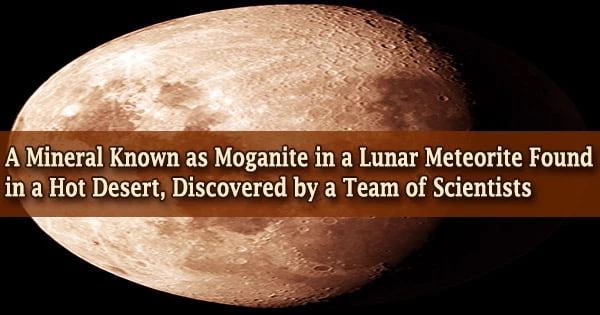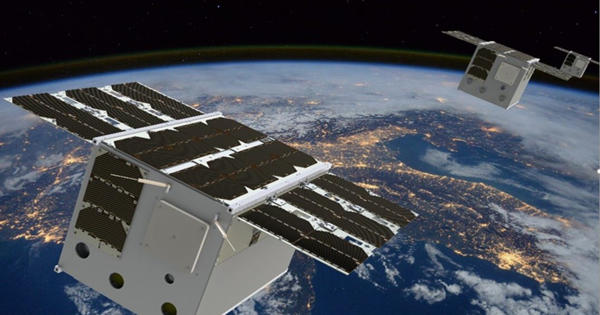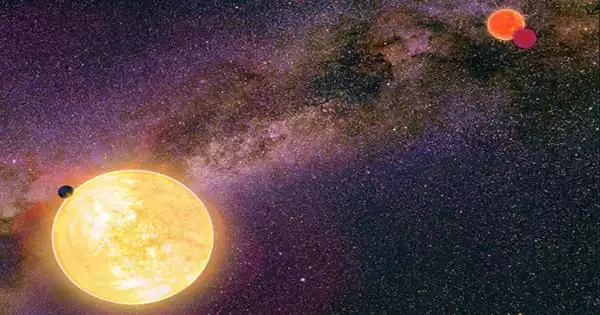Masahiro Kayama of Tohoku University’s Frontier Research Institute for Interdisciplinary Sciences led a team of Japanese scientists that discovered the mineral moganite in a moon meteorite recovered in a scorching desert in northwest Africa.
This is crucial because moganite is a mineral that forms only in the presence of water, confirming the idea that water exists on the Moon.
Moganite is a crystal of silicon dioxide and is similar to quartz. It forms on Earth as a precipitate when alkaline water including SiO2 is evaporated under high-pressure conditions.
Masahiro Kayama
“Moganite is a crystal of silicon dioxide and is similar to quartz. It forms on Earth as a precipitate when alkaline water including SiO2 is evaporated under high-pressure conditions,” says Kayama. “The existence of moganite strongly implies that there is water activity on the Moon.”
Moganite is a kind of quartz that has a different crystal structure than quartz but has the same chemical makeup. It is a semitransparent gray tint with a Mohs hardness of around 6, a dull sheen, and a dull shine.

Kayama and his colleagues used advanced technologies to identify the chemical compositions and structures of 13 lunar meteorites. High-magnification electron microscopy and micro-Raman spectroscopy were used to identify the structure of the minerals based on their atomic vibrations.
Only one of the 13 samples had moganite, proving the team’s conclusion that it could not have developed in the African desert. This mineral has mostly been discovered in arid areas like Gran Canaria and Lake Magadi. It has been reported in a number of European, Indian, and American places.
“If terrestrial weathering had produced moganite in the lunar meteorite, there should be moganite present in all the samples that fell to Earth around the same time. But this was not the case,” says Kayama.
He goes on to say that some of the moganite had transformed into the high-pressure SiO2 minerals stishovite and coesite, which he believes were produced by heavy Moon impact impacts.
The discovery of moganite in lunar rocks is the first of its kind. The meteorites are thought to have come from Procellarum Terrane on the Moon, and the moganite was created by water evaporation under bright sunlight, according to the researchers. Water ice crystals might be abundant further under the lunar surface, sheltered from the light, according to Kayama’s idea.
Water is unquestionably a component of life on Earth, but it is similar to carbon in that, while vital to human survival, it is not living and does not imply that life exists there. We look for water on the moon and Mars because it may be valuable to humanity, but it is not direct evidence of life.
Other factors, such as earth-like temperature, the presence of hydrocarbons, and a thick atmosphere, can all indicate to the possibility of life, but even if all of those factors are present, it does not imply life exists there.
Recent satellite missions have discovered evidence of lunar water or ice concentrated in the poles, where sunlight is reflected at a relatively narrow-angle, creating frigid traps. However, this is the first time that researchers have discovered substantial water ice in the lunar subsurface at mid and lower latitudes.
Water buildup in the lunar soil is estimated to be around 0.6 weight percent by Kayama’s team. If they are correct, future lunar explorers will have easier access to the resource, increasing the prospects of the Moon hosting human habitation and infrastructure, as well as sustaining a range of businesses, in the coming decades.
The Japanese Aerospace Exploration Agency (JAXA) is rumored to be exploring two future missions: a lunar pole landing mission in five years to seek for water resources and a sample return mission from the Moon’s far side in 10 years.
Kayama and his team want to investigate water from the solar wind to regolith soils and volcanic eruptions from the lunar mantle, in addition to checking for water in other silica minerals discovered.
“Solar wind-induced water can give us new insight into the history of sun activity, and volcanic water provides us with information of lunar evolution together with water,” says Kayama, about his lab’s next project. “It’s all very exciting.”
















